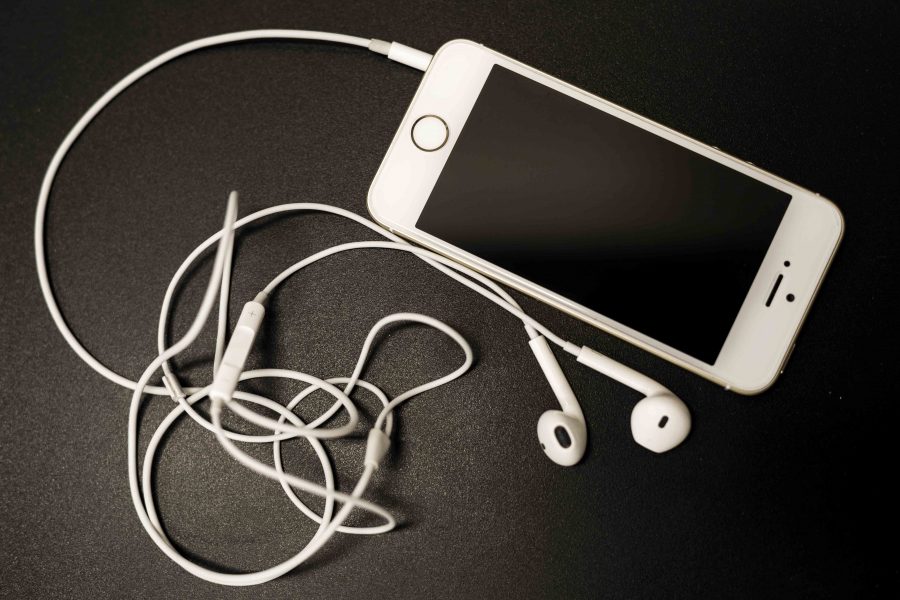Cell Phones: Harming Your Skin?
It turns out that iPhones are dirtier than toilets, so avoid the germs and use headphones or earphones instead.
November 7, 2016
You’ve probably heard from a nervous parent or from the internet that cell phones can cause cancer. Now, there’s another rumor circulating that is causing panic amongst beauty fanatics: the light emitted from your cell phone is damaging your skin. After all, the average millennial cumulatively spends almost an entire day on his or her smartphone every week, according to a TNS study. But just how bad is the smartphone light emission for your skin?
First, let’s debunk the idea that cell phones cause cancer. All cell phones emit a form of energy called radiofrequency radiation, which sounds scarier than it actually is. This radiation can be categorized into two types, based on the amount of energy created: ionizing and non-ionizing radiation. Ionizing radiation consists of high-energy waves that are often emitted by x-ray machines. Non-ionizing radiation contains low-energy waves that are emitted by microwaves and your beloved cell phone. Exposure to ionizing radiation, such as from X-rays, is known to increase the risk of cancer. Non-ionizing radiation has not been proven to cause cancer. Everyone can breathe a sigh of relief now.
The other question still remains: can the light emitted from a smartphone damage your skin? There might be some truth in this statement, according to Koko Hayashi, a Japanese esthetician and founder of Mirau Clinical. Research in Japan has found that “blue light,” or high-energy visible light emitted from your phones, computers and tablets, penetrates deeper into the layers of your skin than the sun’s UV rays and therefore accelerates aging.
“Its damages really worse than UVB or UVA, [hitting the] skin deeper, where collagen or hyaluronic acid or elastin resides,” Hayashi said.
There are some beauty products sold in Japan that protect your skin from HEV light, but few products have been sold in the U.S. Hyashi also notes that there is a very low amount of information on this topic in the U.S., which is not surprising.
Here’s why you shouldn’t worry too much about HEV light: there simply isn’t enough research to confidently back up that claim. One study from 2008 found that HEV light from phones delays the recovery of your skin barrier from exposure to the environment. Another from 2014 concluded that that blue-violet light, compared to UVB light, resulted in more pronounced hyperpigmentation in the skin that lasts for up to three months. While there are several studies out there, there is not enough information about long-term skin damage from HEV lights from phones.
HEV lights may not be the only way that your phone is damaging your skin. Plenty of studies have been conducted on the fact that your cell phone contains high amounts of bacteria — sometimes more than a toilet seat — which can cause face and neck acne. It’s also no secret that the LED light from your phone can throw off your internal sleep rhythm, making it harder to fall asleep and therefore causing under-eye circles and crow’s feet.
Ultimately, it is safe to conclude that your cell phone doesn’t have to be the cause of your skin’s demise, as long as you use it properly.
Email Michaela Hoffman at [email protected].


























































































































































